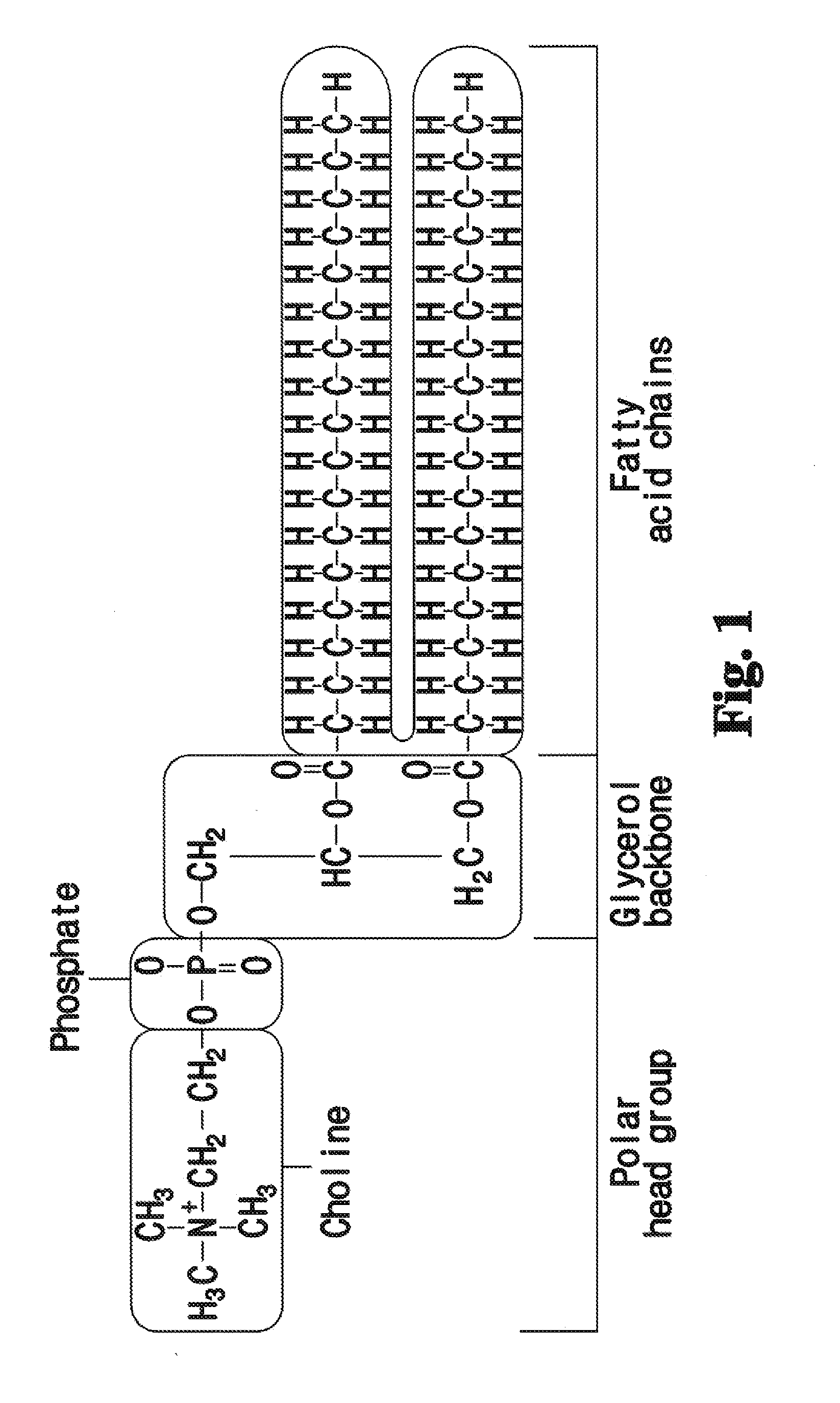Method of processing phospholipid based lipid materials
a phospholipid and lipid technology, applied in the field of chemical processing, can solve the problems of limited application in feed, significant loss of acid oil, and relatively simple equipment, and achieve the effect of high fatty acid content and high yield
- Summary
- Abstract
- Description
- Claims
- Application Information
AI Technical Summary
Benefits of technology
Problems solved by technology
Method used
Image
Examples
example 1
[0096]In a 400 mL beaker, 80 g of VOP were added to 120 g of acid oil at 150° F. and mixed at 100 RPM for 30 minutes while maintaining temperature at 150° F. thereby ensuring uniformity. After mixing, the contents were settled at 150° F. for 24 hours. The contents separated into a fluid phase on the top and slurry like fallout in the bottom. The total weight of the top and bottom phase was recorded 153 g and 46.4 g, respectively. The top phase collected as the final blend product contained 0.5% choline.
example 2
[0097]In a 400 mL beaker, 100 g of lecithin was added to 100 g of acid oil at 150° F. and mixed at 100 RPM for 30 minutes thereby ensuring uniformity. 2.0 g of glycerin and 5 mL of 25% sodium hydroxide were mixed in a separate beaker and this alkaline glycerin was added to the oil mixture while mixing for another 20 minutes. The mixture was then homogenized at 16,000 RPM for 3 minutes while maintaining temperature at 150° F. After homogenization the contents were settled at 150° F. for 24 hours. The contents separated into a fluid phase on the top and slurry like fallout in the bottom. The total weight of the top and bottom phase was recorded 160 g and 40 g. respectively. The top phase collected as the final blend product contained 1.2% choline.
example 3
[0098]100 g of lecithin was hydrolyzed with 200 g of 30% concentration isopropanol, thereby ensuring a 2:1 ratio. 2.5 g of concentrated sulfuric acid was added as a catalyst (2.5% by weight of lecithin taken). The reaction was carried out at 80° C. for 3 hours. After the reaction, the contents were transferred to a separatory funnel and settled at 75° C. for 5 hours. The contents separated into an oil phase on the top, an emulsion layer in the middle and a water layer on the bottom. The emulsion and water layers were collected together. The final distribution of oil phase and Emulsion+Water phases was 65 g and 35 g respectively. The Emulsion+Water phases were concentrated using a rotary evaporator and the final product analyzed for choline content. Choline concentration in the original Lecithin feedstock was 2.88% and in the final product was 5.7%
PUM
| Property | Measurement | Unit |
|---|---|---|
| temperature | aaaaa | aaaaa |
| pH | aaaaa | aaaaa |
| temperature | aaaaa | aaaaa |
Abstract
Description
Claims
Application Information
 Login to View More
Login to View More - R&D
- Intellectual Property
- Life Sciences
- Materials
- Tech Scout
- Unparalleled Data Quality
- Higher Quality Content
- 60% Fewer Hallucinations
Browse by: Latest US Patents, China's latest patents, Technical Efficacy Thesaurus, Application Domain, Technology Topic, Popular Technical Reports.
© 2025 PatSnap. All rights reserved.Legal|Privacy policy|Modern Slavery Act Transparency Statement|Sitemap|About US| Contact US: help@patsnap.com

